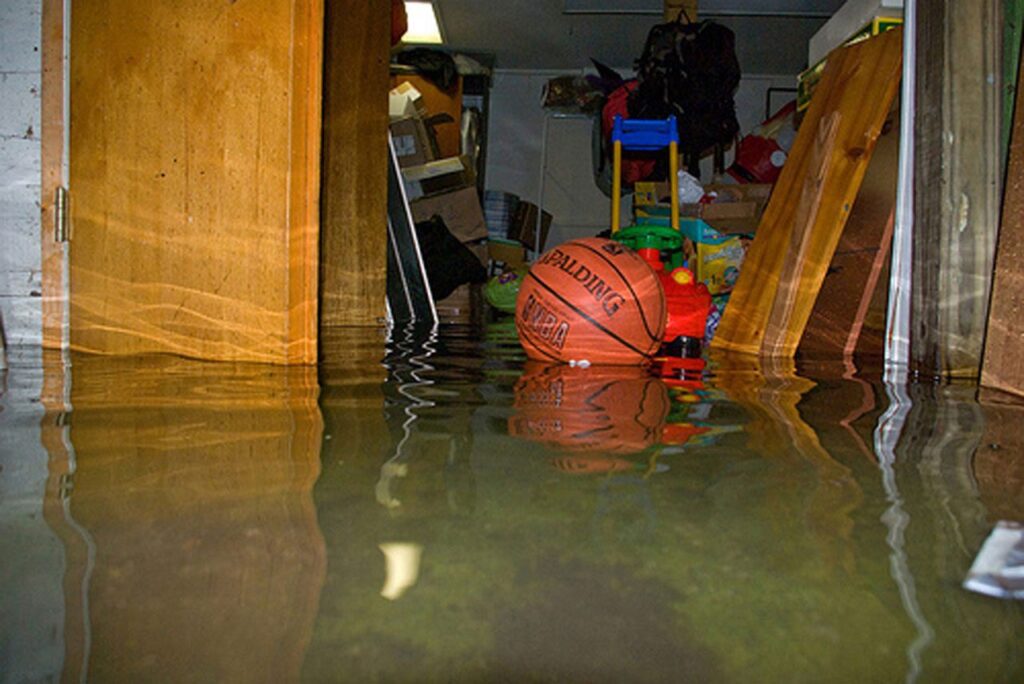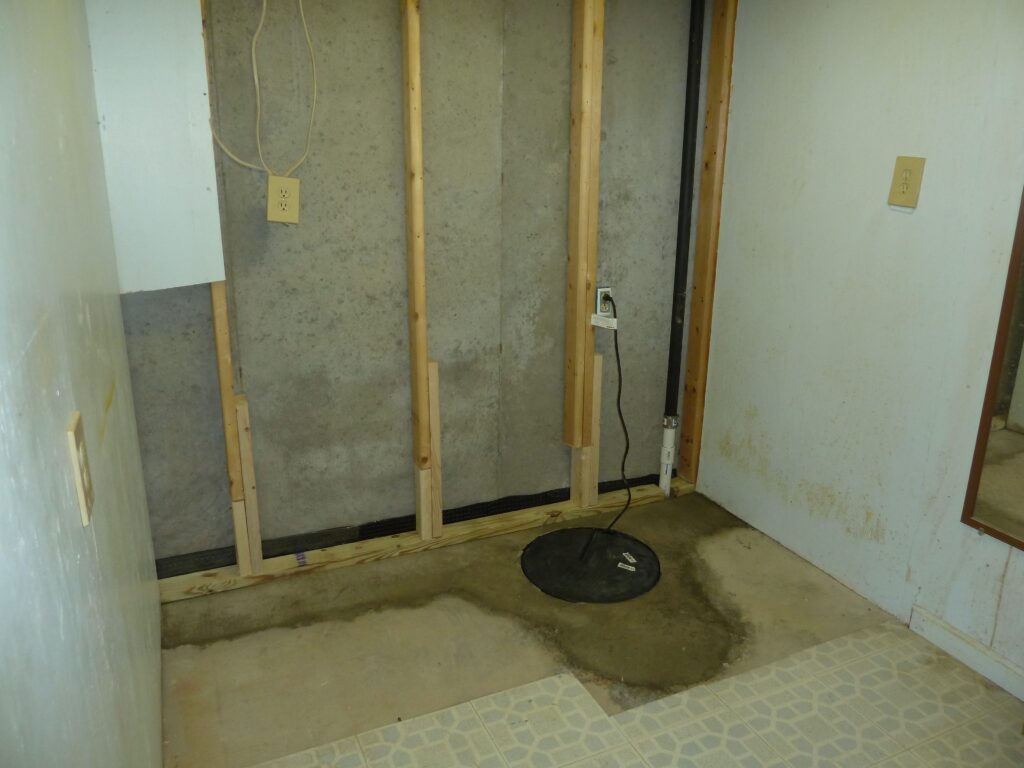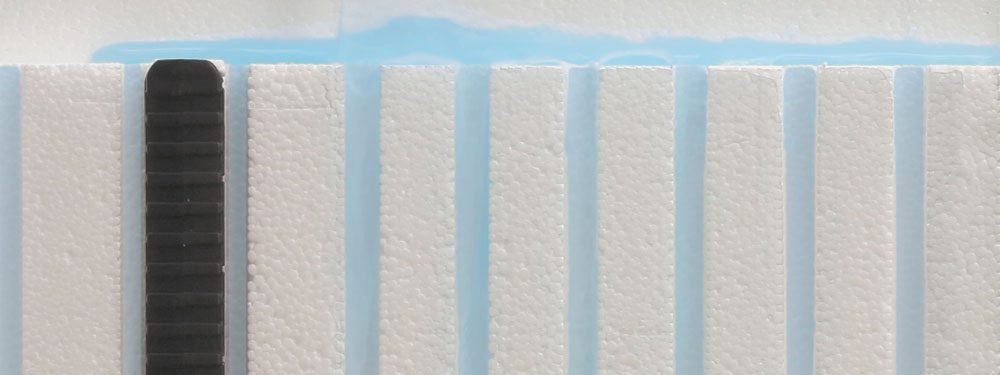

Buildipedia.com
InSoFast the best choice for basement prone to flooding
Basement floods are one of the most depressing and frustrating emergencies a homeowner faces. Whether from an aging water heater or from fierce storms, inches of water in a basement can cause enormous psychological and material damage. Managing flood damage is just as much a process of healing the family as it is remediating the basement.
| Install Guide | Ordering Guide | Contact/Quote |
1. Recognize the Risks
The American Red Cross provides an excellent resource with its Repairing Your Flooded Home publication.

Buildipedia.com
The first recommendations are to take care of yourself and your family:
- Stay healthy
- Keep your family together and informed
- Disinfect dishes and everything touched by flood waters
Recognize the risks to your home as well as your family. Make sure electricity is turned off. Turn off natural or liquid propane gas. Look for signs of mold and mildew and prevent its spread by providing as much fresh air as possible.
2. Deal with Mold and Mildew
Mold and mildew both occur naturally and in small quantities are generally benign. In flooded basements, however, with their confined space and limited air exchange, these natural elements can build to dangerous levels. Professional services may be needed to both detect and eradicate mold and mildew. See Preventing Mold
At the very least:
- Remove anything that flood waters have touched.
- Remove all paper and paper derivatives (drywall, cardboard, books, boxes and cartons).
- Remove fabrics (curtains, rugs, hangings, stored clothing, runners and carpets)
Many molds are simply annoying and smelly; only a few produce mycotoxins that can endanger your family’s health. Most homeowners are not equipped to distinguish between innocuous and dangerous molds, which is why professional services can help. The key to ridding a flooded basement of mold and mildew is to first remove the water source that nourishes the organisms, and then remove the mold and mildew.
According to experts cited at Bankrate.com, mold has two enemies: sunlight and ventilation. The more air and light you can get into your basement, the more rapidly the mold and mildew will abate.
3. Waterproof the Basement
The National Flood Insurance Program provides a handy online calculator that shows that as little as two inches of water can cause more than $20,000 damage in a 2,000-square-foot home. Two inches of water can result from something as simple as an overlooked broken washing machine hose or a ruptured water heater.

Waterproofing the basement means three specific areas:
- Surface drainage— slope landscaping away from the house so precipitation and gutter runoff moves away from the basement walls
- Subsurface drainage— collect and remove groundwater surrounding the basement’s below-ground walls
- Wall surface waterproofing— waterproofing the outside and inside of the basement walls
(below ground) so that water cannot find a way into the basement
After you experience financial damages such as these, you will want to ensure that you do not suffer repair costs like this again in the future. To prevent this from happening again, an investment in basement waterproofing can pay for itself.
4. InSoFast Insulation Panels
Flood or no flood, moisture is always present in basements. Because of this an excellent way to insulate your basement walls is to fit them with InSoFast. Not only are the panels engineered with moisture control panels that redirect moisture, but unlike traditional insulation InSoFast is made from materials that will not warp, rot, rust, or decay. So if a flood does happen, the water will be redirected through the channels and the effectiveness of the insulation will not be compromised by the inflicted moisture.

An exaggerated demonstration of InSoFast moisture control channels redirecting water content. See Moisture Control Page
Why else is InSoFast a good insulation option for your basement? Here’s why:
- Built-in drainage planes simplify processes of a rain screen assembly to help direct water away from walls.
- Closed-cell, injection molded polystyrene insulates dependably year after year, with no
thermal drifting over time. - Studs within the InSoFast panel are water resistant, non-ferrous, and made from a 100% recycled non-conductive copolymer plastic.
- Installation of the panels is a convenient, nearly tool-free process.
- Interlocks on the four sides of each panel have engineered capillary breaks that physically lock out water and heat.
5. Elevate the Essentials
After cleaning up from the basement flood, but before refinishing the interior, use a critical eye to determine which systems in the basement need to be elevated in the event of future floods:
- Furnace or boiler
- Water heater
- Washer and Dryer
- Whole-house humidifier
- Storage shelves
For some systems, concrete block can serve as sturdy supports, though they may not be as attractive as finished cabinetry. While little can be done to keep electrical outlets above major flooding, many basement floods are only inches. Install new outlets at least 16 inches above the finished floor. Install drywall in horizontal rows, rather than vertically, so the next flood destroys only a bottom row of drywall.

